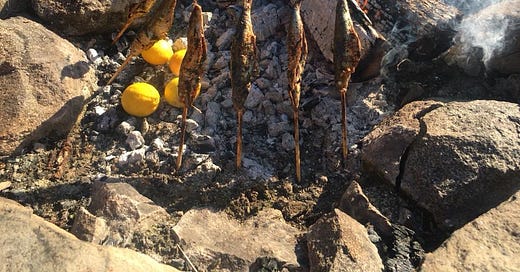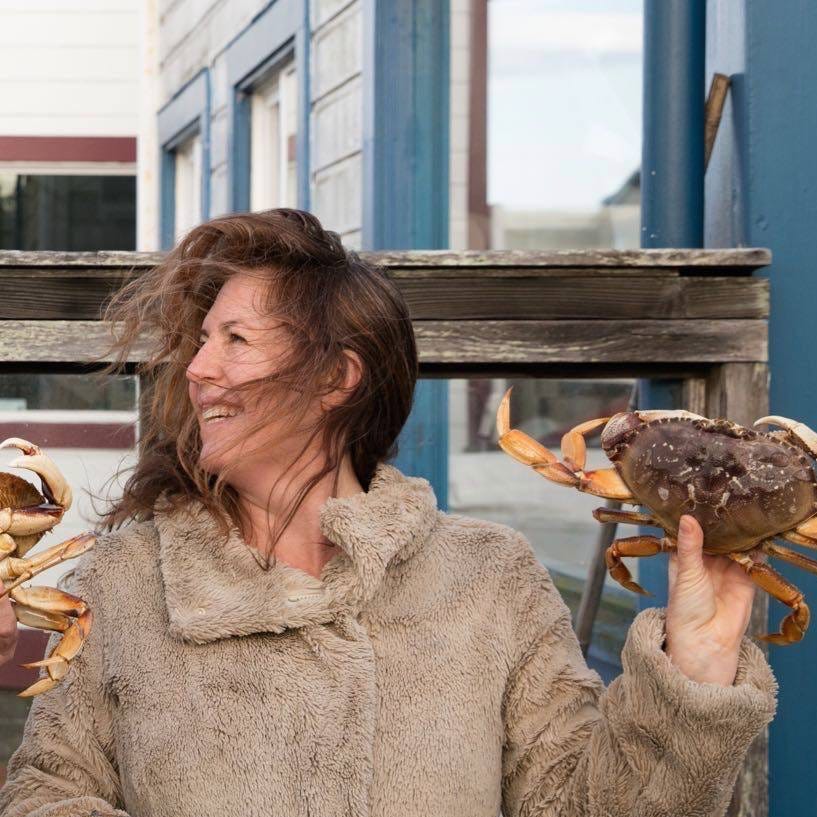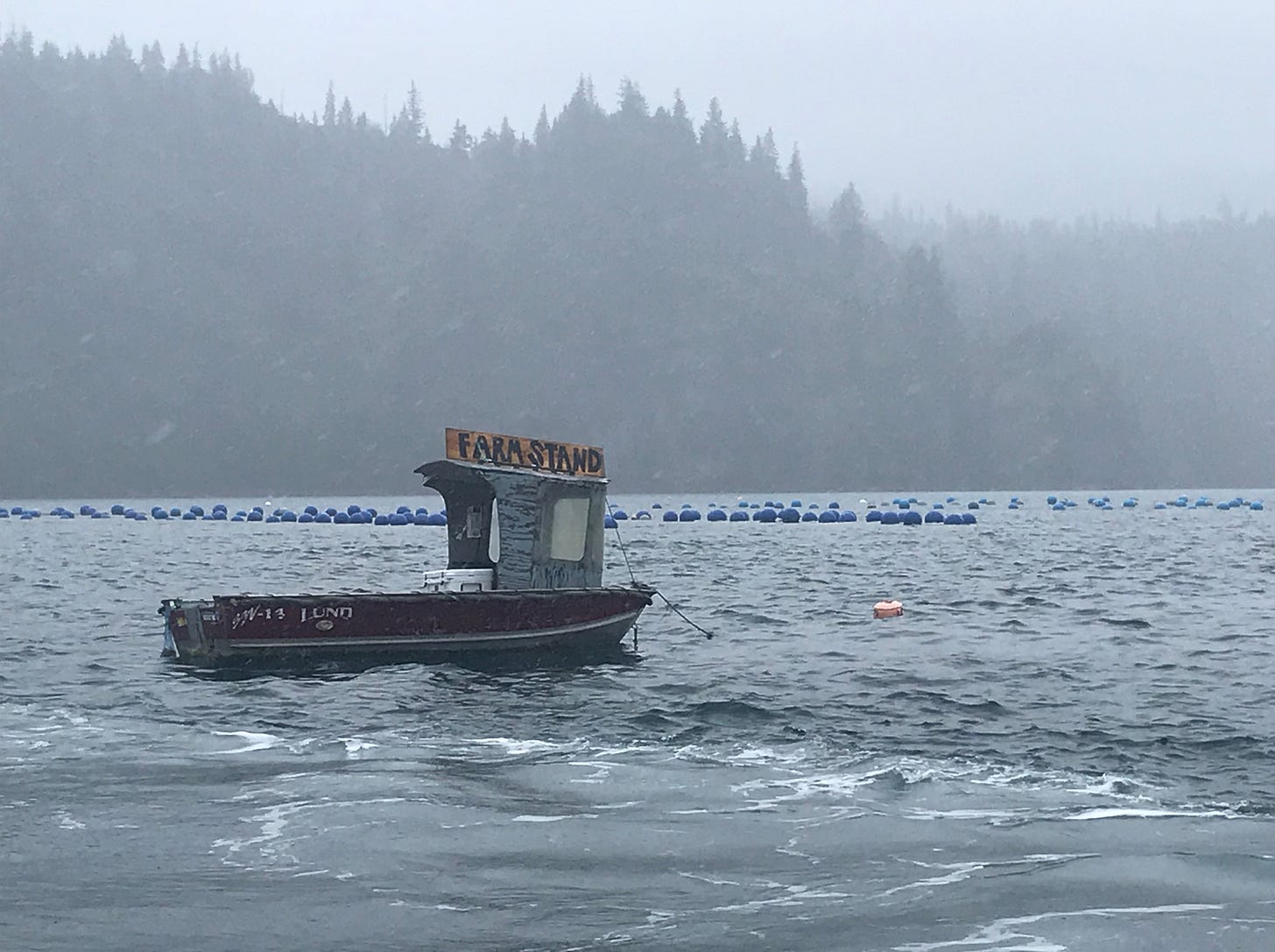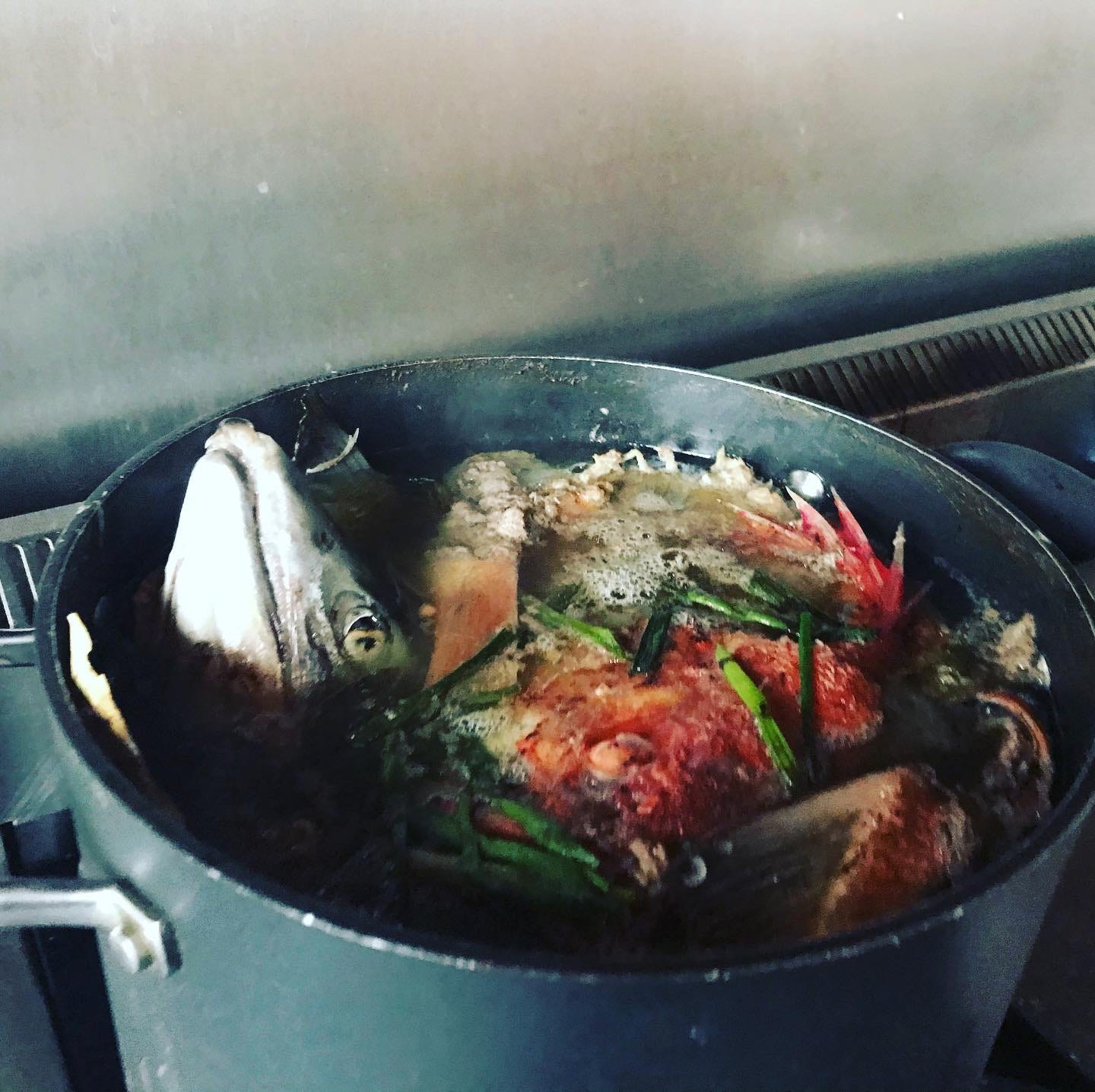Simple climate action // I S S U E # 5 4 // S E A F O O D
From the Editor
By Mike Coren
Energy, transportation, and food. Together, that’s the bulk of humanity’s emissions. Trillions of dollars have been spent decarbonizing power plants and vehicles over the last few decades. Trillions more will be needed to approach net-zero. But the technology is now mostly here, either in the field or in the lab.
Food has only recently gotten the same attention. We still grow our food in much the same way as humanity did when our species first began scratching at the earth around 12,000 years ago. Sure, our tools have improved. Stones have given way to robotic tractors and laser weeding. But our approach is roughly the same: clear the land, plant seeds, and harvest what grows (a few technologies from cellular to indoor agriculture remain around the corner).
And we’ve gotten pretty good at it. Thanks to fossil hydrocarbons, we coax ever more calories than ever from the same plot of land: an acre of corn yields four times more bushels. today than it did in 1948.
But we’ve accepted, without really thinking about it, that the cost of rising yields is the slow destruction of the resource itself: the soil, the climate, the land. As it turns out, that means we’re living on borrowed time. Civilization depends on healthy soils (and, for now, chemicals used to compensate for their loss). But most soil is now in fair, poor, or very poor condition. Farm costs are rising, yields are plateauing, and soil around the world is degrading.
Regenerative agriculture is the idea that growing food restores the fertility of the soil— or the sea. It sounds like a fringe movement but it’s actually the way new generations of Montana farmers are already weaning themselves off the old hydrocarbon model. About half of the farmers in Toole County, where Wendy Fauque helps run a 5,000-acre ranch, are starting to implement regenerative practices. “I think ag is headed that way,” she says, “but there’s so much money in the chemicals and fertilizer and in the way things are done that it’s hard to get away from that and figure out how to find those markets.”
This week, Maria Finn takes us back to the ocean and leaves us with instructions on how to eat like you’re part of an ecosystem. Regenerative eating is not just organic or local. It’s understanding you have a place among the local plants and animals, and deepening your connection with them. This understanding affects us and them. It sounds mystifying, perhaps, but it’s an exhilarating and humbling experience.
And it makes everything taste better.
Outside my house near San Francisco Bay, there are rocks inhabited by thousands of black-bodied mussels covering boulders in the surf. A few months ago, we ventured out during low tide as the Pacific bashed against the cold rocks. We pried a few mollusks out of wet nooks and crevices, our bodies soaked by the green spray. I still remember those mussels, and the stew we made afterward, as one of the best meals I’ve ever had.
Try some of the ideas below. Your plate alone won’t change the world’s food systems. But you are planting seeds for the future.
Mike
mj@hothouse.solutions
Poll results, seafood lovers
Hey Hothousers, how many times a month do you enjoy seafood? 🍣 🐟 🍥
None … 13%
One 🎣 … 7%
Two - Three 🎣 🎣 … 13%
Four - Six 🎣 🎣 🎣 🎣 … 53%
On the regular 🍣 🐟 🦀 🐚 … 13%
Eat to rejoin your ecosystem
Responding to abundance
By Maria Finn
What we choose to eat can be as complex as the machinations of the universe, or as simple as following our instincts. Study how sea lions pursue their food: fishing the currents, reacting to their environment, keen on whatever is in the vicinity. As cooks and as eaters, we can learn something from this, even if we’re not swimming for our own meals.
While industrial fishing and farming often degrade oceans and waterways, we could use our best science and engineering to grow our food, and restore the source of its productivity. We could, in other words, see ourselves as part and parcel of nature. That’s what Henry David Thoreau had in mind when he wrote Walden in 1854. “Not till we have lost the world,” he wrote, “do we begin to find ourselves, and realize where we are and the infinite extent of our relations.”
And it’s what I witnessed while living with the Yupik people in the Alaskan Yukon. There was no separating the abundance of salmon from the health of the river from the fate of a people who had lived there beyond memory. The river shaped everything about the Yupik’s lives—how they traveled, their cosmology, where their food came from.
And we aren’t so different. Not really. The oceans enable humans to live on Earth. Half of the world’s oxygen is produced via phytoplankton photosynthesis. One billion people rely on the protein afforded by seafood. And most of the world’s excess heat due to global warming is being absorbed into the ocean depths.
That means the choices we make about seafood play a part in a larger, complex, and multifaceted system that involves the whole Earth’s well-being. We can come to see ourselves as a part of this ecosystem, not just above it, by creating a better relationship with what we eat, personally and politically.
Some tips for you as you undertake this journey of eating like an animal.
1. Respond to abundance.
If there are a lot of anchovies, sea lions eat anchovies. If there are a lot of albacore tuna, they eat albacore. If it’s a big year for squid… you get the point. They don’t wait around for a bluefin tuna to swim by. It does not make sense for us to eat only rare apex species rather than abundant smaller fish. Instead of appreciating these little fish, they are often reduced to fishmeal or oil.
This is then shipped to industrial farms around the world. Farmed shrimp and salmon are doused with antibiotics, and then transported thousands of miles. California squid and Alaskan salmon are shipped to China for cheap processing, only to be sent back to our stores. This creates a protein loss and much higher carbon footprint than it should.
One way to opt-out of these energy-intensive systems is to ask what’s in season. Your local farmers market, grocery store, or even Costco, will know, and it’s often less expensive. When it’s salmon season in Alaska, they’ll most likely be selling sockeye salmon and coho salmon.
Community-supported fisheries are another way. These offer weekly or bi-monthly subscriptions of local seafood that often include recipes. You’ll get to know your fishermen, local seafood, and what’s seasonal. In the United States and Canada find one through Local Catch Network.
Also, at many ports, you can buy directly from fishing boats and talk to the fishermen and women about what they’re seeing on the water.
2. Eat animals that improve their habitat.
Choose regenerative seafood like oysters, mussels, and clams. They improve the waterways where they are cultivated. And ask how your seafood was harvested to avoid fish caught with destructive methods. Bottom trawlers destroy ocean floors, have massive bycatch environments and release carbon from the sea bottom into the air. The Monterey Bay Aquarium’s Seafood Watch guidelines is the most comprehensive for world-wide seafood choices.
3. Diversify Your Seafood Choices
Eating only top predators on the ocean—swordfish, tuna, and marlin—is a bit like grazing on lions. Also, stray from farmed salmon and shrimp and try new things.
Batter and fry up some invasive species, such as shad from the Columbia River or lionfish that are wreaking havoc in Florida. There are shellfish like geoduck or brown clams you could try every once in a while. Just about any seafood makes a delicious cioppino, chowder, or bouillabaisse. There are also a lot of excellent conservas or tinned seafood out there. Patagonia Provisions is focused on regenerative seafood, and Wild Planet also has strict sustainability standards and excellent tinned sardines and anchovies. And don’t forget seaweed, a regenerative superfood.
4. Eat the Whole Animal
Animals don’t eschew the most nutritious parts of the fish and only eat prime fillets. Besides, you’re missing some of the best parts. Scrape the bones for “spoonmeat,” boil the head and bones for stock, and make a wonderful fish chowder from parts normally tossed out. Try bottarga grated over a bowl of pasta with lemon and bread crumbs. Or add a scoop of Ikura, or brined salmon eggs, to a rice bowl with avocado and kimchi. The bellies and collars of larger fish are often thrown out, but these fattier parts have the most flavor and nutrients in them. I like to grill salmon belly and serve it with an acidic sauce, like yuzu kosho.
5. Rejoin your local ecosystem:
Animals are integrated into their food web. You can be too. Get wet and muddy and come to know your coastline. If you go fishing, clamming, searching for mussels, or foraging for seaweed, you’ll become part of the seasons, move with the tides, and catch a marvelous glimpse of the natural world. Anything you bring home will taste that much better, an intimate taste of an underwater world. Our eating habits define our ecosystem.
What we learn in nature will inform what we buy at the grocery stores and farmers markets and what we order in restaurants. Now transformed, you may want something that resembles a tide pool and smells like a squall.
Our month on seafood is up. As is true every month, Hothouse Solutions invested significant resources to produce this series of stories. Hearing how these stories may have impacted you helps shape our future reporting. Let us know what you think!
What actions, if any, do you think you’ll take after reading this story? Please select all that apply.
📚 Read more on seafood, aquaculture, or other food production systems and techniques
🦑 Consider making changes to my diet to be more climate-conscious overall
Like what you’re reading? Share Hothouse with a friend (or many)! 🌞 🌎
Hothouse is a weekly climate action newsletter written and edited by Mike Coren and Cadence Bambenek. We rely on readers to support us, and everything we publish is free to read.












